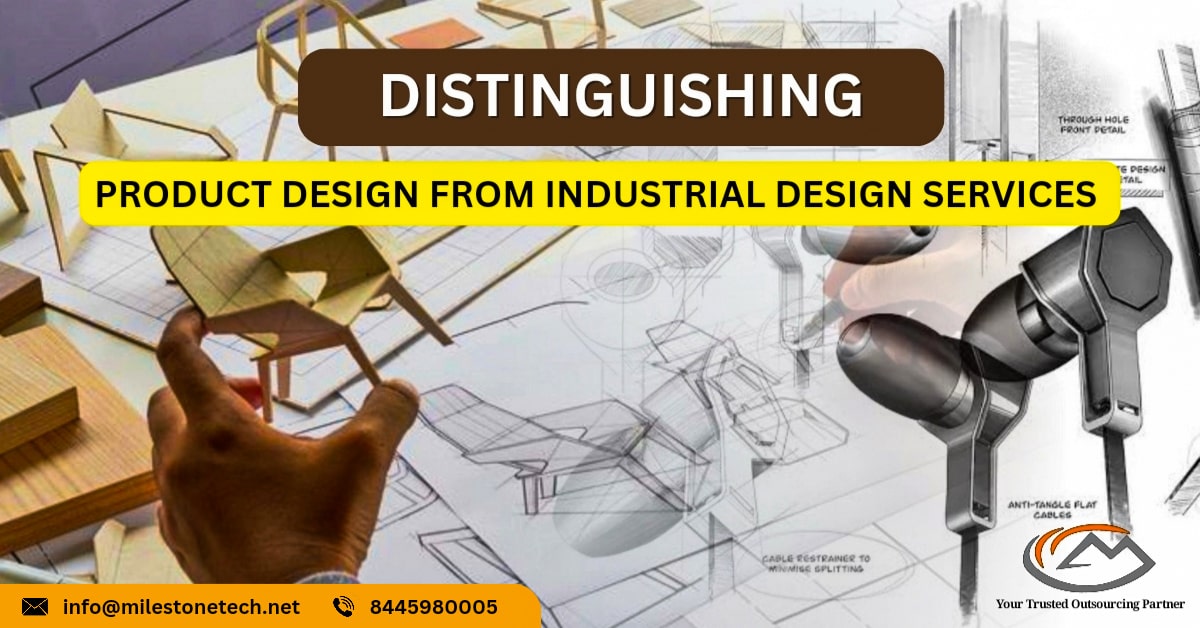Distinguishing Product Design from Industrial Design Services

In the world of design and innovation, two terms that often get mixed up are “Industrial Design” and “Product Design.” These fields are closely related, and professionals in both areas share similar skills and goals. However, there are subtle yet significant differences that set them apart. In this blog post, we will delve into the distinctions between Industrial Design and Product Design services, helping you understand their unique characteristics and applications. In this blog we will be providing detail information on “Industrial Design VS Product Design”.
Industrial Design vs. Product Design
To comprehend the disparities between Industrial Design and Product Design, let’s start by defining each term. Industrial Design refers to the process of creating and developing designs for various products, systems, and environments that are both functional and aesthetically pleasing. Industrial designers are responsible for shaping the form, appearance, and user experience of a wide range of items, from consumer goods to automotive interiors and even architectural elements. Their work often involves a deep understanding of user needs, market trends, materials, and manufacturing processes.
Product Design, on the other hand, is a subset of industrial design that focuses specifically on designing individual products. Product designers are tasked with conceiving and developing unique product concepts. They are responsible for turning ideas into tangible items that meet market demands while considering technical and engineering-based requirements.
Designing Unique Ideas
One of the key distinctions between Industrial Design and Product Design services is the scope of their projects. Industrial designers work on a broader scale, tackling projects that encompass a range of products and experiences. They may be involved in designing the overall look and feel of an entire brand or enhancing the user experience across various products within a company’s portfolio.
Product designers, on the other hand, focus on the nitty-gritty details of creating specific items. Their expertise lies in turning a concept into a market-ready product. They take into account not only the aesthetics but also the functionality, ergonomics, and manufacturability of the product.
The Role of Industrial Designers
Industrial designers are known for their ability to think holistically. They take a 360-degree approach to design, considering how various products and elements fit together to create a cohesive user experience. They might work on projects like designing the layout and interior of a commercial space or creating the user interface for a complex software application.
In essence, an industrial designer can also be a product designer when the project requires it. Their versatility allows them to zoom in and focus on individual products while always keeping the bigger picture in mind.
Technical and Engineering-Based Design
Another crucial distinction is the technical aspect of design. Product designers dive deep into the technical details of a product’s functionality and engineering requirements. They collaborate closely with engineers to ensure that the design can be manufactured efficiently and that it meets performance standards.
Industrial designers, while knowledgeable about engineering principles, tend to approach design from a broader perspective. They prioritize the overall user experience and aesthetics, trusting that their technical counterparts will handle the finer technical details.
Conclusion
In summary, Industrial Design and Product Design services are closely related disciplines that share common goals but differ in their scope and focus. Industrial designers create holistic design solutions that encompass a wide range of products and experiences, while product designers specialize in crafting individual products with a strong emphasis on technical and engineering-based design. Both fields are essential in the world of design and innovation, and they often collaborate to bring innovative and user-centric products to market. Understanding the distinctions between these disciplines can help businesses and individuals choose the right design expertise for their specific projects, ensuring that they achieve both functional and aesthetically pleasing outcomes.
Follow Milestone PLM Solutions for Mechanical Industry Updates, CAD Tips and Global Mechanical News.
Milestone PLM Solutions with its exclusive delivery center in India is a global CAD, Product Design partner serving the needs of the Mechanical Industry since 2004. MILESTONE focuses on the unique needs of clients and believe in tackling real-life problems with efficiency, smooth and ease.
We support multiple BIM software including SOLIDWORKS, AutoCAD, CATIA etc. Our approach is to provide a dedicated team for each customer over ongoing project and deliver the quality output consistently.
With our state of art technology and large talent pool of Engineers, we are developing best in class solutions for our customers across the globe. We align with your culture and values to form unbreakable partnerships and are primed for success with over 100 employees and 150 customers in the US, Europe, India, and Asia.
You can email us at info@milestonetech.net and can log in to our website www. milestonetech.net to know more about our services and our work portfolio or contact us on +1-844-598-0005
